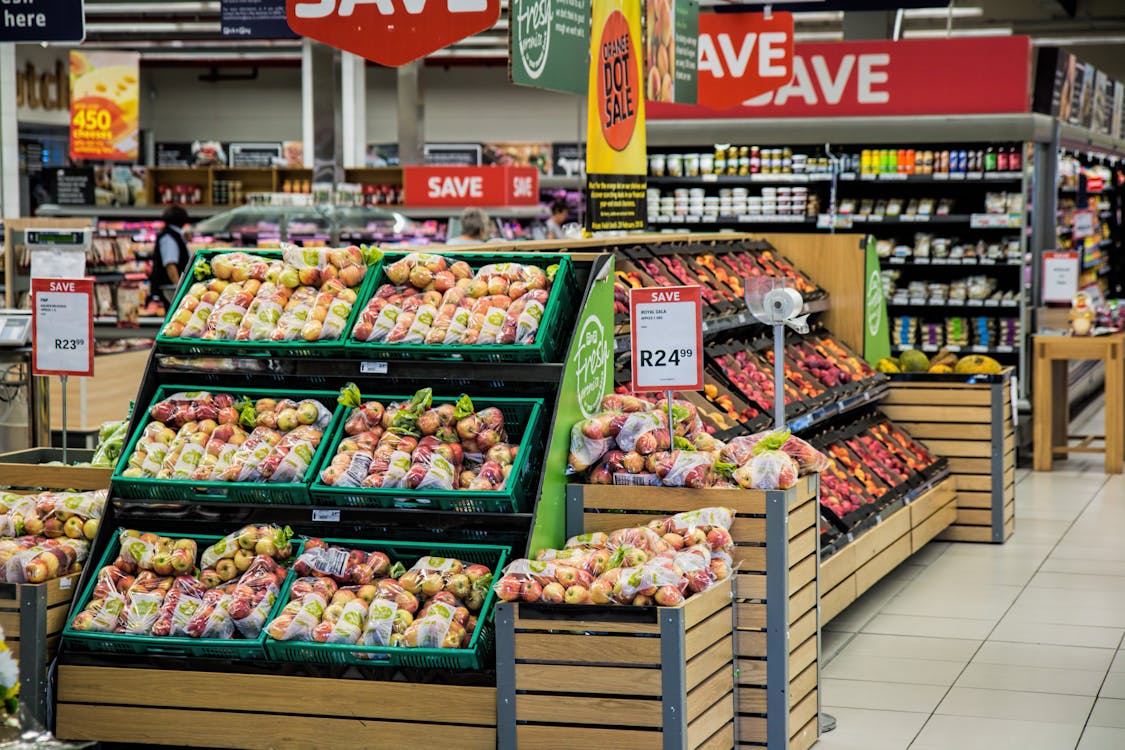Contents
Grocery shopping can be a daunting task because of all the choices available when you get in the store. Did you know that the average supermarket sells 38,718 items? No doubt, it can feel tiring to walk the aisles!
When you throw in all the tempting treats, you will realize that a grocery run starts to look more like a struggle than a chance to fill your cart and your body with healthy, good-for-you foods.
But you can avoid the hassle and leave the store with bags full of healthy choices with these healthy grocery shopping strategies. Good nutrition starts with making good choices in the grocery store.

Plan and Have a List
Making a list is an essential step in having a successful shopping trip. That way you can make sure you get the items you need for healthy meals instead of being sidetracked by all of the possibilities in the aisles.
A list also aids in saving you time and money by reducing the number of visits to the grocery store. You can make your list on a piece of paper, on your phone, or by using an app.
Some grocery stores have their software for creating a list that you can use.
Broaden Your Shopping Horizons
Supermarkets are easy to come by, but the prevalence and proliferation of farmers’ markets, food co-ops, and Community Supported Agriculture (CSA) programs are also increasing.
They provide fresh, local (often organic) produce, and most often sell locally produced meats, dairy products, and bread loaves.
Try to make the transition to locally-sourced foods or at least try to work them into your grocery plans. Visit localharvest.org to locate a farmers’ market, co-op, or CSA nearby you.
Check Out New Food
We often end up with the usual products in our cart. There surely are some fruits, vegetables, whole grains, and legumes you haven’t eaten before.
Try out new things to make nutritious eating exciting each week by incorporating new foods into your weekly meal plan – like raw jicama dipped in hummus with kiwi.
Think about trying one new meal every week. Without added sugar, fat, or sodium, a variety of healthy whole foods helps to improve nutritional intake.

Shop the Outside First
The principle here seems to be that the grocery store’s periphery usually is organic, less processed foods. Think of fresh fruits and vegetables, dairy products, eggs, and poultry/meats/seafood.
On the outside, the bakery and frozen desserts can still lurk, but there are more whole food options commonly. Shopping for whole foods is always a good goal.
The temptation to pick up bad foods is decreased by skipping some of the center aisles, but there are some nutritious foods in the center aisles that should be included in your diet.
These items include things such as almonds, nut butters, dried or canned beans, seeds, dried fruit, whole grains, herbs, and spices.
These foods can be staples you have at home, so shop wisely and avoid walking up and down each aisle. If your refrigerated dairy and produce are sitting in your cart, you will have less time to spend in those aisles.
Read Nutrition Labels
A long time ago, food marketing teams noticed that the customers want nutritious food, and they know precisely how to persuade them. Large label prints now say “all-natural,” “low-fat,” and “low-sugar.”
But you should read the fine print by reviewing the nutrition label on the back of each box to make sure you’re getting something healthy and safe.

Conclusion
Our daily habits and our food choices influence our well-being and health. In our attempts to lead a healthier lifestyle, several variables can get in the way, including busy schedules, unavailability of fresh produce, and clever food industry ads.
The above healthy grocery shopping tips will help you to conquer some of your healthy eating and grocery shopping obstacles.
